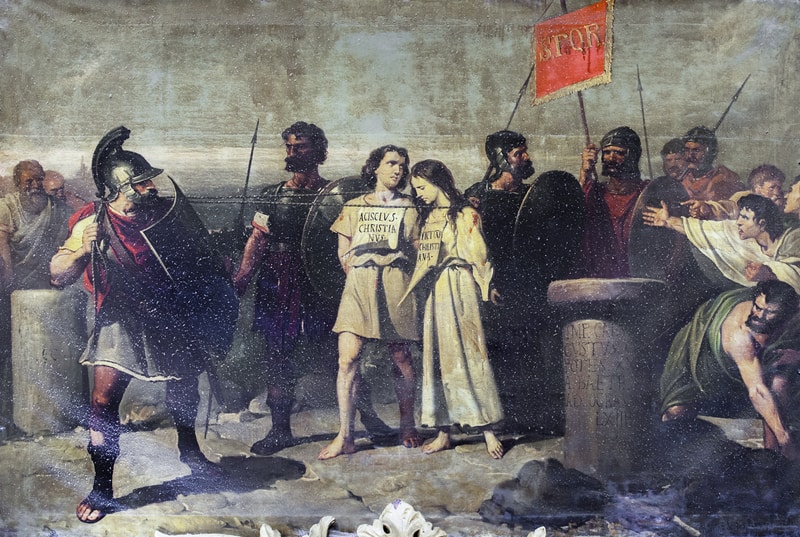Throughout history, and continuing to the present day, people have been persecuting one another. Often people in power persecute others who proclaim a different faith or worldview, or are of a different ethnic group.
But history shows us that being different is not enough to invite persecution. Those who persecute will invariably also perceive differences, and the people associated with them, as a threat to their power and way of life.
Paul persecuted the church because he saw the church as a threat. He saw it as a threat to the Jewish people, their traditions, and their security. And he also saw the church as a threat to the power of Pharisees like himself.
Understanding the Threat
To understand the threat that Jesus and the church posed to Paul, the Pharisees, and the institution of Second-Temple Judaism, we must examine the players a little more closely. And we must also examine them in the context of their relationship to their imperial Roman occupiers.
Who Are the Pharisees?
Paul, in Philippians 3:5-6, describes himself as a Pharisee, blameless under the law. The Pharisees embodied a school of thought that was central to the life of first-century Jews and the preservation of Jewish law and tradition. This zeal of the Pharisees was only amplified by the increasing power and influence of the Roman Empire.
The Law of Moses and the covenant of Abraham were the sources of identity for the Jewish people, in general. And for the Pharisees in particular, the law, the covenant, and the temple were the source and seat of their power. The Sanhedrin, the legislative body of the Jewish people, was largely comprised of Pharisees.
The Threat to Tradition
The Pharisees, as self-appointed guardians of the Jewish way of life, studied the scriptures diligently and knew them intimately. They developed and enforced meticulous regulations in order to uphold the Jewish law, sometimes to the point of minutiae.
Reading the gospels, we find that most of the conflict between Jesus and the Jewish religious leaders came from Jesus’ interaction with the Pharisees. Jesus challenged their interpretation of the law by doing such things as healing on the Sabbath and eating with tax collectors. And the more people listened to Jesus, the harder it would be for the Pharisees to preserve their particular brand of Judaism.
It was for these reasons that the Pharisees conspired to hand Jesus over to the Roman governor to be executed.
But that didn’t stop the threat.
After Jesus was raised from the dead, his followers became bolder. They proclaimed Jesus as the messiah with more volume, and in more places, and their followers grew.
In Paul’s Own Words
Some writers suggest that Paul was merely offended by Christians proclaiming Jesus was the messiah. But there were countless self-proclaimed messiahs in first-century Judaism that are lost to history. Their message was simply not taken seriously, and their movements died with them.
By contrast, the Jesus movement wasn’t going away. It was growing and needed to be stopped from the outside. So the same Pharisees that conspired to kill Jesus then began a violent campaign to silence His followers. It is during this time that we first meet Paul (then called Saul), who in Galatians 1:13-14, writes that he persecuted the church because of his zeal for the Jewish traditions.
Traditions that gave him his power and authority, and were suddenly threatened.
When Stephen was seized for preaching the gospel and brought before the high priest, his accusers said he was speaking “against this holy place and against the law,” (Acts 6:13). Saul was given authority to oversee the stoning of Stephen and to arrest and imprison other followers of Jesus. And he would continue on this course of action until confronted by Jesus himself.
The Threat of Rome

While dealing with the increasingly problematic Jesus movement, the Jewish leaders also feared Roman intervention if they could not contain the threat. The Roman occupation was oppressive to the Jewish people, with its crushing taxes and brutal justice.
Yet the religious leaders had brokered a tacit, yet uneasy deal with their overseers. The Romans would not require the Jews to burn incense to the Emperor, as Roman law demanded, as long as they paid their taxes and didn’t cause trouble.
So a growing chorus of voices declaring “Jesus is Lord,” would be sure to draw the attention and ire of the Roman authorities, whose law declared “Caesar is lord.” The Jewish leaders did not wish to invite such attention. They understood that the Romans perceived Christianity as a sect of Judaism, and not as a distinct movement, and that retaliation would be enforced against all the Jews.
Roman persecution of the church in the centuries to follow would later give credence to this notion that Rome would perceive the gospel message as a threat.
Conclusion
And so, starting with Jesus himself and continuing through the life of the early church, we see how His message threatened delicate balances of power.
The unique Jewish identity as the people of Abraham’s covenant. The Pharisees’ exclusive expertise regarding the law. The temple as a seat of power and a symbol of security. Rome’s willingness to turn a blind eye and let the Jews live as Jews.
Paul and his fellow Pharisees risked losing all of these things, because of Jesus and his followers. And that is what motivated him to persecute the church, until on the road to Damascus, he encountered Jesus, risen and glorified. From there, Jesus changed Paul’s heart and gave him a new way of seeing the world.





